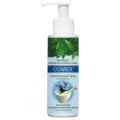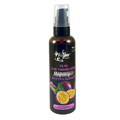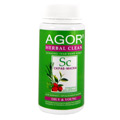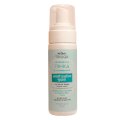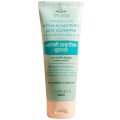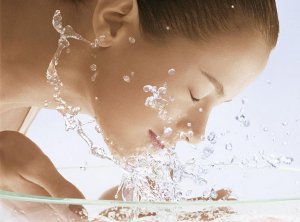 Many people believe that oily skin doesn’t need hydration in the summer due to the amount of skin oil it produces, but they couldn’t be more wrong. Oily skin, like any other, needs intensive moisturising during the summer months in order to prevent its dehydration. Let’s figure out how to properly moisturise oily skin in the summer.
Many people believe that oily skin doesn’t need hydration in the summer due to the amount of skin oil it produces, but they couldn’t be more wrong. Oily skin, like any other, needs intensive moisturising during the summer months in order to prevent its dehydration. Let’s figure out how to properly moisturise oily skin in the summer.
Oily skin is characterized by the overactive sebaceous glands that produce more sebum (skin oil) than necessary. As a result, the protective layer of sebum on the skin surface becomes too thick; it gets mixed with dust and clogs pores, which eventually leads to blackheads and acne breakouts. Besides, it gives the skin a greasy and shiny appearance, as well as makes you feel really uncomfortable.
These problems of oily skin become even more pronounced in the summer heat. To prevent them, many people with oily skin resort to alcohol-based skin cleansers and toners, as well as scale back on moisturising or even stop using moisturisers at all. Unfortunately, it only makes things worse.
The thing is, the harder you try to dry the oily skin on your face, the more oil your sebaceous glands produce, because you strip your skin of moisture and protection, and your body tries to compensate it. And if you skip moisturising, your skin will become dehydrated under the protective layer of sebum. In addition to being oily and shiny, it will become dull, as well as lose its healthy glow, elasticity and firmness.
That’s why it is important to moisturise oily skin all the year round, including the summer months. Of course, you should use moisturisers that are specifically designed for your skin type and have a light texture. Heavy creams are a big no-no; you should look for light creams, lotions or serums.
Gel-like moisturisers are one of the best options for moisturising oily skin in the summer. Common moisturising ingredients used in them include natural aloe vera leaf juice or gel, cucumber extract or distillate, squalane, and aquaporins. Other hydrating agents that considered good for oily skin include polyssacharide-based ingredients (for example, Fucogel), algae extracts (bladder wrack or kelp), thermal water, rose extract or flower water, lavender extract or flower water.
You should keep in mind that your moisturiser for the summer should contain less oils than normal. However, you can make an exception for light-textured oils that absorb well and are considered non-comedogenic. Such oils include, for example, grapeseed oil, sweet almond oil, wheat germ oil, neem oil, and jojoba oil.
In addition to hydrating ingredients, your summertime moisturiser for oily skin should contain ingredients that improve the skin’s firmness and elasticity, antiseptic ingredients, oil control ingredients, ingredients that help the skin to retain moisture, and ingredients that protect the skin from environmental stressors, such as heat and UV radiation.
It is worth noting that, paradoxical as it may seem, it is possible overdo with moisturising oily skin in the summer. So you’d better refrain from active use of moisturising masks during the summer period; applying moisturiser twice a day, in the morning and in the evening, should be enough to keep your skin properly hydrated.
If you’re feeling that your skin doesn’t get enough moisture, you can use natural, alcohol-free toner alongside moisturiser. It will keep your skin feeling fresh during the day, help to maintain its normal hydro-lipid balance, and produce an antiseptic, anti-inflammatory and antioxidant effect. It will be great if your toner contains lime, peppermint, lemon, calendula, tea tree or rosemary herbal extracts, floral distillates or essential oils, as well as panthenol and allantoin (these two ingredients have a pronounced soothing, moisturising and regenerative effect).
In our online shop Organic Store, you can find a great selection of moisturisers for oily and combination skin produced by trustworthy brand of natural and organic cosmetics. We offer affordable prices, convenient payment methods, and international delivery to most parts of the world.

